Do your kids have trouble understanding the difference between Fiction and Non-Fiction?
Does it seem to happen EVERY YEAR, even though you KNOW you taught it, talked about it, reviewed it, played games with it, gave them time to investigate and practice together, and any other number of activities? Despite all that effort, do you still have to take a deep breath when you hear kids saying:
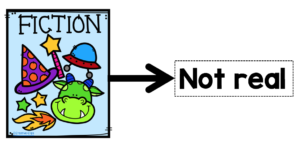
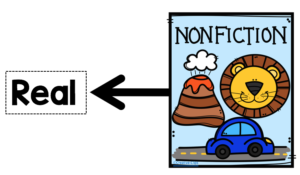
While I can see where they are getting this idea, it does start to cause problems when they come across fiction stories that are based on things that could actually happen (Realistic Fiction) or stories that are made up but involve “real” things or use actual photographs.
So over the years, I developed a lesson that seems to help kids with understanding the difference between Fiction and Non-Fiction texts. Here’s what I did initially:
- First, I showed the students the book Sea Bones by Bob Barner. Upon looking at the front cover, many of my kids said this was going to be a Fiction story because there’s no such thing as a “skeleton” fish swimming in the ocean. Some even thought it was going to be a scary story about “ghost fish” (I had to smile at that one!)
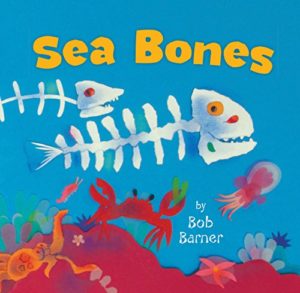 2. So then we began reading it. Right away kids started shouting “Oh! It’s teaching us facts about the bones in a fish!” By the time we finished the book, all kids were in agreement that this book was full of information about different types of skeletons. This is when I introduced our NEW definition of a Non-Fiction book.
2. So then we began reading it. Right away kids started shouting “Oh! It’s teaching us facts about the bones in a fish!” By the time we finished the book, all kids were in agreement that this book was full of information about different types of skeletons. This is when I introduced our NEW definition of a Non-Fiction book.
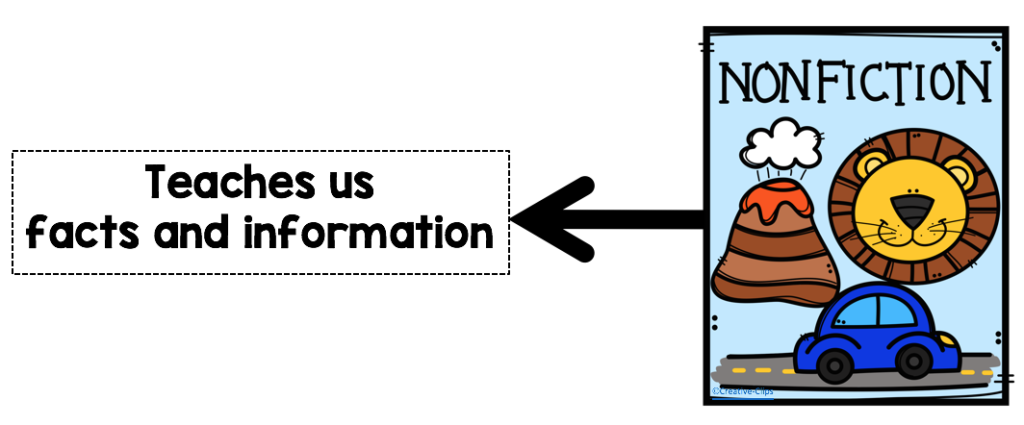
3. Then I showed them the book The Secret Life of Squirrels by Nancy Rose. Some kids noticed the photograph of an actual squirrel and said, “This is going to be a Non-Fiction book because it has a real squirrel on the front cover.” (Again, there’s that word “real” causing problems!) But then others commented, “But squirrels don’t write letters or put them in a mailbox, so this can’t be “real”.

I patiently waiting while they discussed their ideas, and then a magical and wondrous thing happened …. one quiet, little girl spoke up and said “We don’t know for sure until we read it. If the book teaches us facts about squirrels then we know it’s a Non-Fiction book!” (Can you hear me shouting “Yes! Yes! Yes!”)
4. The kids all agreed, so we read the story together. By the end, everyone understood that this was actually a made up story about a squirrel named Mr. Peanuts. This is when I introduced our NEW definition of a Fiction book.

5. The next day, I brought a sample of different Non-Fiction books for them to look through, and we discussed the different types of Text Features that are found inside to help you understand the facts and information better. You can read more about my Non-Fiction Text Features Scavenger Hunt here.
6. Now, each time students come to the library, we look closely at the book we are going to read. We do book walks and look for clues that it COULD be Non-Fiction (actual photographs, text features, etc.) but they know we aren’t going to know for sure until we actually read the book. I’m still working on those “real” misconceptions with some kids, but this lesson has seemed to help kids with understanding the difference between Fiction and Non-Fiction books.
Something new I created this year that went perfectly with this lesson was my Book Sorting Activity.
1.First, I made a poster with two empty bookshelves, and asked the students what the two main types of books were. We added the labels, but then I asked them to remind me what the definitions were again, so we could practice what Fiction and Non-Fiction meant.
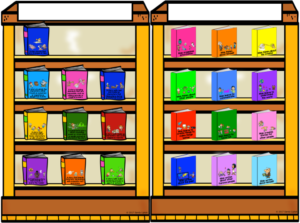
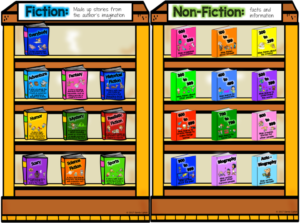
2. Then we used this poster to delve deeper into Fiction books. I placed samples from different genres on tables around the library. (We use nine genres: Adventure, Fantasy, Historical Fiction, Humor, Mystery, Realistic Fiction, Scary, Science Fiction, and Sports.) I had them look at the books, read the summaries on the back, and talk about what they thought each stack of books had in common. When we came back together, I introduced the word “genre” and we went through each stack of books. As they shared their ideas, I showed them the description and genre name for each one. As we learned it, we put the actual name of the genre on the poster above it’s correct description.
3. On their next visit, I did the same thing but this time I had samples from the Non-Fiction section. (You can read about some fun ideas on how to teach the Dewey Decimal system here.). Again, as they shared their ideas I showed them the description and the 100’s section for each stack of books. As we discussed it, we put the hundred section on the poster above it’s correct description.
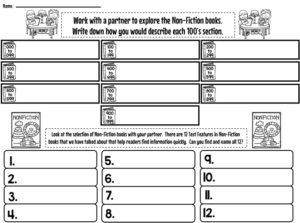
Here’s how our posters looked at the beginning and end of today.
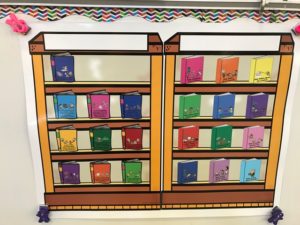
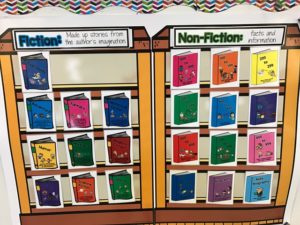
4. For the following visit, we discussed how well-rounded readers read all kinds of different books. Then I gave them a black and white copy of the bookshelves, and told them that their mission this year was to try and read at least one example of all the books on both bookshelves.
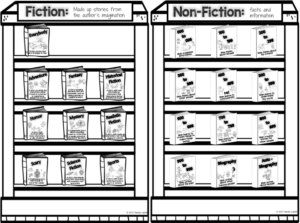
As they read a genre, they can color it in. Anyone who finishes coloring in BOTH BOOKSHELVES will earn a special bookmark or pencil. Next year I plan to do this at the beginning of the year and have a bulletin board set up titled “Well Rounded Readers are Leaders!” Anyone who completes the entire reading log will get their picture on the bulletin board. More to come on this later as I’m still working on it! 😉
I hope you find these ideas useful!














Thanks for sharing your ideas. I struggle with teaching this and explaining it over and overand over! But when it comes to books about monsters or vampires how do you teach that is non-fiction too? I can’t quite get teachers to get this when they come to the library. Thanks for your thoughts!
Hi Kelly,
It is difficult, and I also struggle with that area. I always try to refer back to the section title “Philosophy and Psychology”. Books about monsters or vampires are there so that each person can “think” about how they “feel” about it. You may believe, you may not. Many of the books on those topics are giving information about how people have viewed the topic throughout time, sharing the “evidence” that made some people believe. The books give information gathered from other people, but ultimately it’s up to each person to decide what they want to believe in. I know this is not the most succinct answer, but that’s the best way I’ve come up with describing this for teachers and students. I hope this helps a little bit! 🙂
How do you teach folk tales and fairy tales—the 300’s????
Hi Kay,
I’ve written two different blogs about this. The first one is here at http://lessonsbysandy.com/2013/04/folktales-fairytales-and-fables-oh-my.html
I updated that information in another blog post recently here at: http://lessonsbysandy.com/2013/12/fairy-tale-update.html
I hope this helps! 🙂
Sandy